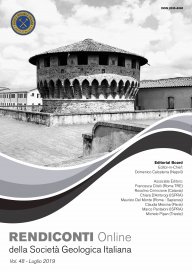
Assessing geomorphic changes induced by a debris-flow: a case study in the Dolomites
Francesca Minute (1), Francesco Comiti (1) & Marco Cavalli (2)
(1) Free University of Bozen-Bolzano, Faculty of Science and Technology, Bozen-Bolzano, Italy.
(2) National Research Council (CNR), Research Institute for Geo-Hydrological Protection (IRPI), Padova, Italy.
Corresponding author e-mail: francesca.minute@gmail.com
Volume: 48/2019
Pages: 23-28
Abstract
The study of landscapes and of their dynamics has become fundamental to understand natural hazard mechanisms and the better planning of mitigation measures to prevent damages and losses. Debris flows are a common natural hazard for mountain areas. One major event occurred on the August 5th, 2017 in the Prags-Braies valley (Italian Alps). Heavy rainfall triggered the movement of loose
sediments from talus slopes within the Schade catchment into the village of Schmieden-Ferrara. This study aims to analyze the debrisflow event by using a DEM of Difference (DoD) approach to estimate the mobilized materials and identify the spatial patterns of erosion and deposition in the catchment. Two different methods to estimate the error and propagate uncertainty of DTMs into the DoD were tested and compared: i) spatially uniform constant error threshold, and ii) spatially variable uncertainty through a fuzzy approach. The elaboration was carried out using the fuzzy approach as this was considered the most reliable for the study case. The result showed a net balance of –115,719 ± 46,043 m3. This value was taken as a reference for the design of a sediment retention basin at the catchment outlet, currently under construction by the local Civil Protection Agency.
Keywords
Get Full Text